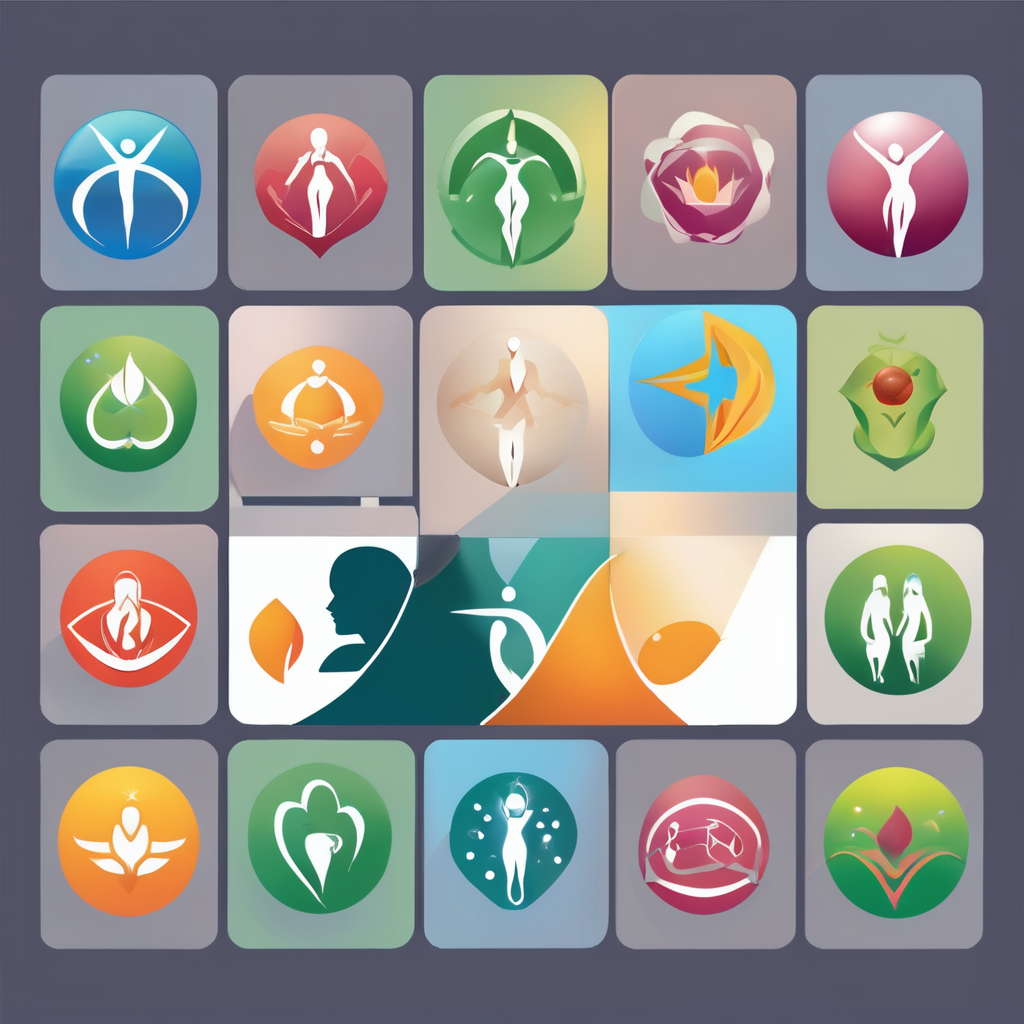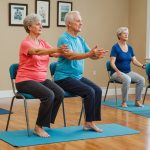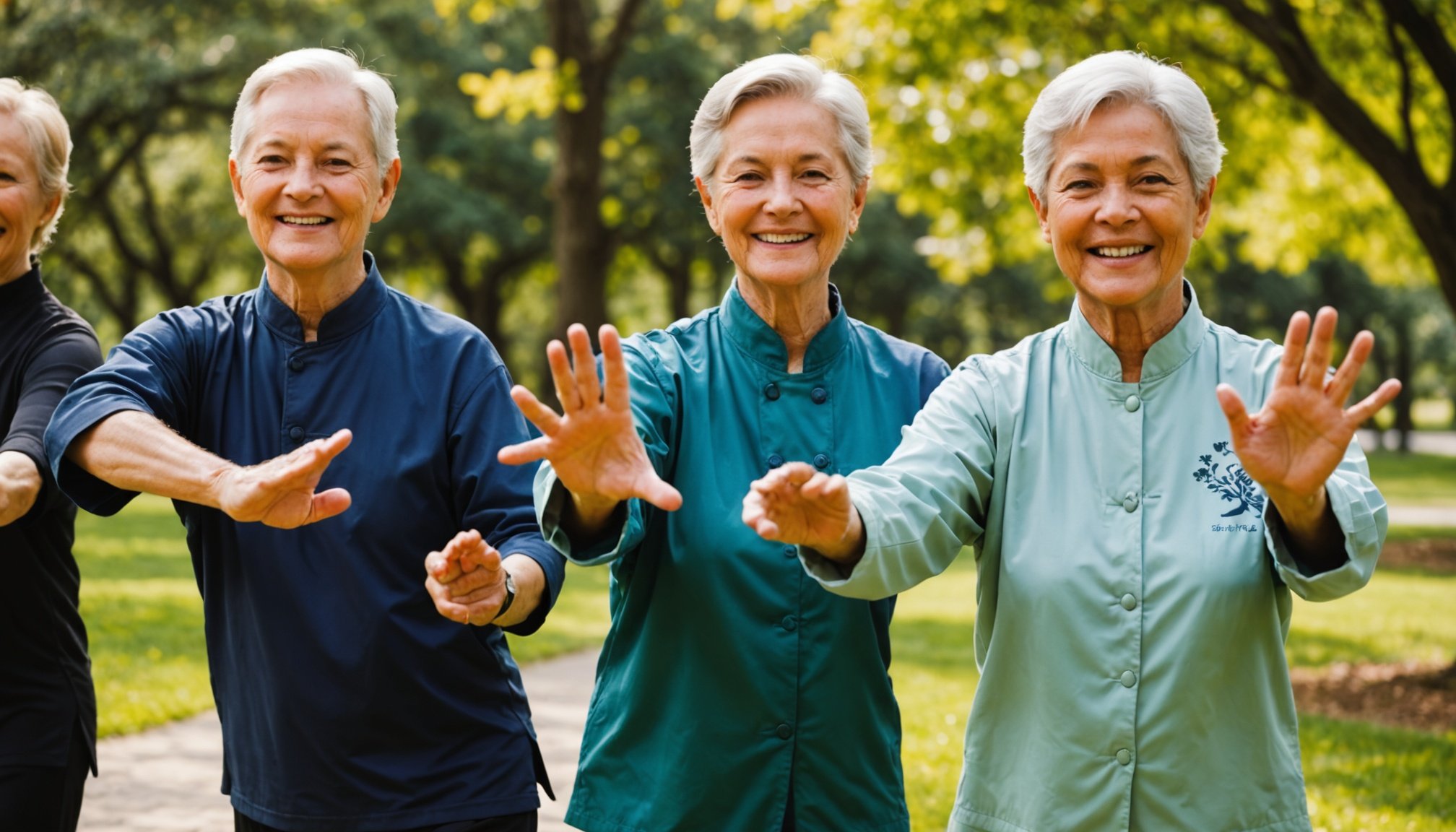Overview of Tai Chi
Tai chi is an ancient martial art originating from China, celebrated for its gentle movements and meditative practice. Unlike many forms of exercise characterized by rapid and high-impact movements, tai chi emphasizes slow, deliberate actions and focus. This makes it particularly attractive to a wide range of practitioners, including those exploring tai chi for seniors for improved health and wellness.
The key principles involve balancing energy, or “qi,” through meticulous techniques. Fundamental tai chi basics include postural control, rhythmic patterns, and mindful breathing. Each movement in tai chi is performed in harmony with the breath, creating fluid sequences that engage both the body and mind.
Also to discover : Empowering women: proven techniques to boost bone density during menopause – your complete guide
Tai chi boasts a unique approach compared to other workouts. It combines physical activity with elements of mindfulness, promoting a holistic connection between the mind and body. This distinguishes tai chi from traditional physical regimes, offering benefits not just for physical health but also for mental well-being. While gym routines might prioritize cardiovascular or strength conditioning, tai chi integrates aspects of mental focus and tranquility.
Health and Wellness Benefits of Tai Chi for Older Adults
Tai chi health benefits are particularly notable for the aging population, as this practice significantly aids in enhancing both physical and mental well-being. One of the most profound outcomes is the improvement of balance and coordination. Through the graceful movements and deliberate weight shifts inherent in tai chi, older adults often experience better stability, which is crucial in reducing fall risks—an important benefit as we age.
Also to discover : Empowering independence: essential tips for harnessing adaptive equipment for people with disabilities
Moreover, tai chi contributes to the enhancement of flexibility and mobility, promoting greater range of motion in joints and muscles. This is achieved through the continuous, fluid sequences that tai chi practitioners perform, helping keep the body agile and less prone to stiffness or injury.
Equally important is tai chi’s role in the reduction of stress and anxiety levels. The practice’s focus on mindful breathing and meditative aspects allows individuals to calm the mind, alleviate tension, and foster a sense of tranquility. This mental peace is invaluable, providing a natural remedy for anxiety, often encountered in later years.
The multifaceted wellness for seniors brought by tai chi embodies a holistic approach, addressing both physical frailties and mental strains that accompany aging, delivering comprehensive health benefits.
Practical Tips for Beginners
Starting a tai chi journey can be both exciting and rewarding. As a beginner, it’s important to start with tai chi basics. Begin by familiarising yourself with the fundamental movements and principles. The simplicity of these initial steps enhances your connection to the practice.
Finding the right class or instructor is crucial for a fulfilling experience. Look for instructors who specialise in tai chi for beginners and have experience teaching different skill levels. Their guidance will ensure accuracy in movement and provide encouragement as you progress.
Home practice is also beneficial. Establish a consistent routine by dedicating a particular time and space for tai chi. Try practicing in a quiet area to facilitate concentration and connect with the meditative aspects. A suggested routine could include starting with basic postures and gradually increasing practice duration as confidence builds.
Remember: Patience and persistence are key. Take time to enjoy the process of learning and refining your skills in tai chi. Embrace each step on this journey, allowing the benefits of tai chi to naturally unfold and enrich your life.
Success Stories and Testimonials
The transformative power of tai chi is vividly showcased through real-life success stories for seniors. Many older adults have shared their positive tai chi experiences, highlighting how it has improved their physical and mental health. For instance, a senior who struggled with joint stiffness described how practicing tai chi routines daily significantly increased their mobility and reduced pain.
Emotional well-being is another area where tai chi testimonials shine. Individuals consistently report a reduced level of anxiety and an enhanced sense of calmness. One participant shared how the meditative aspects of tai chi helped them manage stress better, leading to a more balanced life.
Beyond personal gains, tai chi often fosters social connections. Tai chi classes become a hub for community engagement, where participants not only enjoy the physical benefits but also make lasting friendships. This communal aspect often provides a support network that extends beyond the practice mat, enriching their overall quality of life. Through these stories, the profound impact of tai chi becomes clear, offering testimonies of joy, vitality, and connection.
Modifications and Adaptations for Different Fitness Levels
Incorporating tai chi adaptations ensures that this ancient practice remains accessible to individuals of varying fitness levels. For those facing mobility challenges, specific tai chi modifications can be beneficial. Simplified movements focus on seated positions, allowing practitioners to engage upper body exercises that mirror traditional standing sequences.
Tools and props play a vital role in making tai chi for seniors more inclusive. Chairs, for instance, provide stability and support, enabling participants to focus on mastering foundational moves. Resistance bands can further assist, offering gentle resistance for strengthening exercises without straining the body.
To seamlessly integrate tai chi into daily routines, it’s crucial to advance progressively. Start with shorter sessions, gradually building endurance as comfort increases. Aim to incorporate tai chi into everyday activities, like practicing mindful breathing during walks. This approach fosters both confidence and improvements in physical capabilities.
Such tailored practices empower individuals, ensuring everyone can experience the numerous benefits of tai chi. By accommodating different fitness levels, tai chi becomes a truly versatile exercise that promotes both physical and mental well-being, underscoring its holistic appeal.











